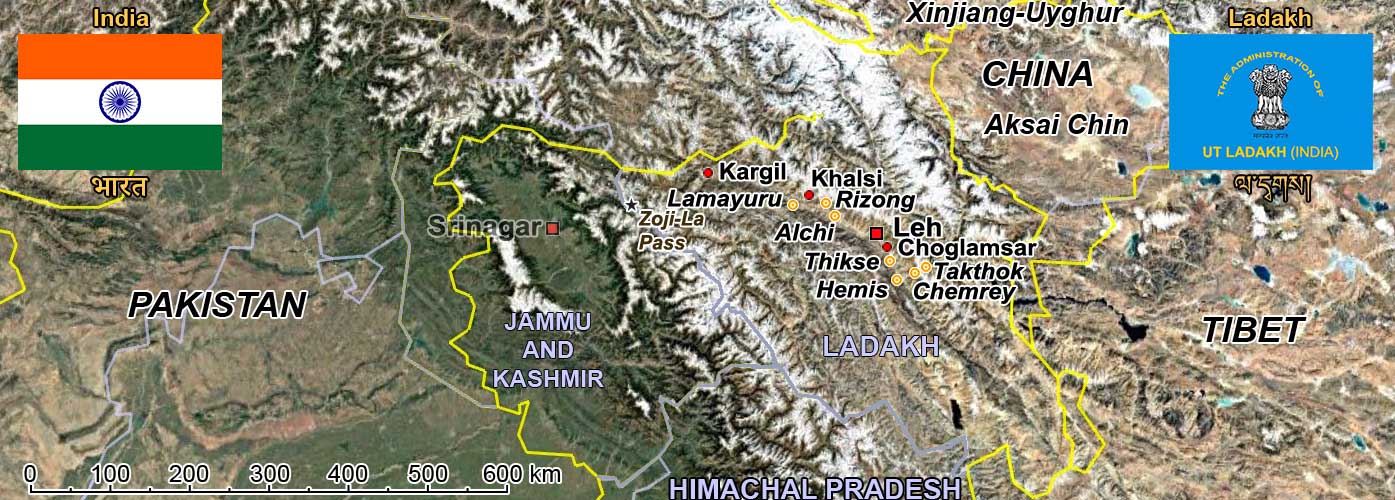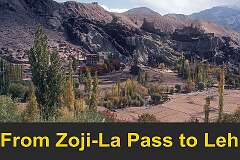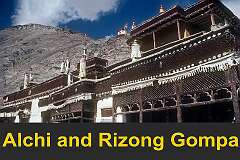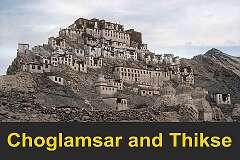
- Arunachal Pradesh
- Assam
- Delhi
- Goa
- Himachal Pradesh
- Jammu & Kashmir
- Kerala
- Madhya Pradesh
- Meghalaya
- Mizoram
- Nagaland
- Punjab
- Rajasthan
- Sikkim
- Tamil Nadu
- Telangana
- Tripura
- Uttar Pradesh
- West Bengal
Ladakh, a union Territory of India with a unique Tibetan Buddhist culture
8-19 October 1979
Ladakh is a stark yet enchanting region in the northern Himalayas of India. Bounded by the Karakoram in the north and the Great Himalaya in the south, it lies at altitudes ranging from 3,000 to over 5,000 metres. Influenced by Tibetan culture, it embraced Buddhism around the 8th century. It emerged as a distinct kingdom in the 10th century under the rule of King Lhachen Palgyigon, who established Leh as the capital. Its strategic location along the ancient Silk Route made Ladakh a crossroads for caravans carrying silk, spices, wool, and turquoise between Central Asia, Tibet, and India.
From the 15th century, Ladakh flourished as a Buddhist kingdom, building monasteries like Hemis, Thikse, and Alchi, which became centres of art, learning, and spirituality. In the 17th century, King Sengge Namgyal, known as the "Lion King," expanded Ladakh's territory and constructed landmarks such as Leh Palace. However, invasions by neighbouring powers, including the Dogras of Jammu, gradually eroded its independence.
By the mid-19th century, Ladakh had been incorporated into the Dogra-ruled princely state of Jammu and Kashmir, under British suzerainty. After India's independence in 1947, Ladakh became part of India, its frontier witnessing conflict during the wars with Pakistan and China. In 1962, parts of eastern Ladakh (Aksai Chin) were occupied by China and remain to this day. Since 2019, Ladakh has been a separate Union Territory of India. Today, Ladakh is celebrated not only for its stark natural beauty but also for its enduring cultural heritage, balancing ancient traditions with a modern identity.
From the 15th century, Ladakh flourished as a Buddhist kingdom, building monasteries like Hemis, Thikse, and Alchi, which became centres of art, learning, and spirituality. In the 17th century, King Sengge Namgyal, known as the "Lion King," expanded Ladakh's territory and constructed landmarks such as Leh Palace. However, invasions by neighbouring powers, including the Dogras of Jammu, gradually eroded its independence.
By the mid-19th century, Ladakh had been incorporated into the Dogra-ruled princely state of Jammu and Kashmir, under British suzerainty. After India's independence in 1947, Ladakh became part of India, its frontier witnessing conflict during the wars with Pakistan and China. In 1962, parts of eastern Ladakh (Aksai Chin) were occupied by China and remain to this day. Since 2019, Ladakh has been a separate Union Territory of India. Today, Ladakh is celebrated not only for its stark natural beauty but also for its enduring cultural heritage, balancing ancient traditions with a modern identity.













